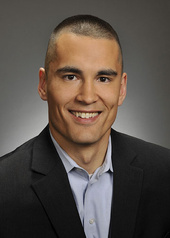 Tysons Corner is built for people, not cars. Prime proof of this is the Comprehensive Plan for Tysons Corner . In the decades to come, Tysons will become a livable and vibrant urban center where people live, work, play, shop, worship, and even retire. Tysons is transforming itself from a textbook case of suburban sprawl into a true 21st century urban center that addresses the challenges of sustainable growth, energy conservation, environmental protection, affordable housing, and safe communities. If adhered to and implemented as planned, the transportation portion of the Comprehensive Plan will become the backbone of that plan. On June 22, 2010, the Board of Supervisors adopted a Comprehensive Plan for Tysons Corner that will turn the area into the county’s “downtown”. The plan focuses future growth within an easy walking distance of transit. In fact, 75 percent of future growth will be within a half mile of the four Metro stations. Many offices and homes will be a three to six minute walk from these stations, allowing people to get around on foot, bicycle, bus, or subway.
Tysons Corner is built for people, not cars. Prime proof of this is the Comprehensive Plan for Tysons Corner . In the decades to come, Tysons will become a livable and vibrant urban center where people live, work, play, shop, worship, and even retire. Tysons is transforming itself from a textbook case of suburban sprawl into a true 21st century urban center that addresses the challenges of sustainable growth, energy conservation, environmental protection, affordable housing, and safe communities. If adhered to and implemented as planned, the transportation portion of the Comprehensive Plan will become the backbone of that plan. On June 22, 2010, the Board of Supervisors adopted a Comprehensive Plan for Tysons Corner that will turn the area into the county’s “downtown”. The plan focuses future growth within an easy walking distance of transit. In fact, 75 percent of future growth will be within a half mile of the four Metro stations. Many offices and homes will be a three to six minute walk from these stations, allowing people to get around on foot, bicycle, bus, or subway.
In 2005 the Fairfax County Board of Supervisors appointed the Tysons Land Use Task Force to make recommendations to update the 1994 Tysons Corner Comprehensive Plan. Two of the new Plan objectives were: 1) “Preserve and enhance Tysons Corner as a vital economic center”, and 2) “Develop multi-modal integrated transportation systems that complement each other and mitigate traffic impacts in Tysons Corner and in adjacent residential neighborhoods and also to maximize the use of Metrorail and other forms of mass transit and develop cohesive pedestrian and bicycle circulation systems to facilitate walking, cycling and transit use and to reduce reliance on automobiles.”
The area is home to Tysons Corner Center, the largest shopping mall in the state and in the Baltimore-Washington area, as well as two upscale shopping centers, Tysons Galleria and Fairfax Square, which neighbor it to the north and south. Every weekday, Tysons Corner draws 55,000 shoppers from around the region. With these kinds of statistics, it may seem almost impossible to avoid traffic and vehicular congestion.
Tysons Corner has 46 million square feet (4.3 million m²) of office and retail space, making it an important business district in its own right and the classic example of an edge city.
Tysons Corner was one of the inspirations for, and figures prominently in, Joel Garreau's pioneering study of the edge city phenomenon. Among the reasons for calling Tysons Corner an edge city is that, in contrast to typical "bedroom" suburbs, people commute into it in the morning and away from it at night, with a daytime population greater than 100,000 and a nighttime population of less than 20,000.[9] That has created a lot of traffic congestion, which local urban planners hope to mitigate by enticing more people to live there, and thus not have to get in their automobiles to get to work if they also can work there. The planned extension of the Washington Metro via the new Silver Line into Tysons Corner will ease access for residents as well. Planners envision up to 200,000 jobs and 100,000 residents in coming decades.
For more information on the vision of the Tysons of the future, visit http://www.fairfaxcounty.gov/tysons/.

Comments(0)